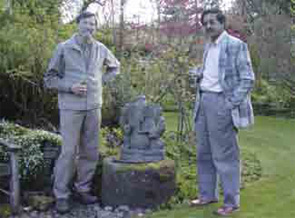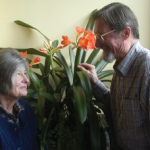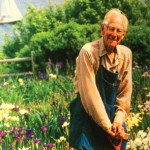Choosing medicine meant that Dr. Bacon became “the black sheep of the family,” he jokingly remarked, because he broke with family tradition to do so (both his grandfather and father were actuaries). Encouraged by “an extremely good biology master” at his Quaker school, the young Dr. Bacon sat for the Cambridge entrance exams, was accepted, and then did his clinical studies at the “ancient” hospital of St. Bartholomew, founded in 1123.
As a resident in general internal medicine/ cardiology, he worked with a group that had introduced cardiac catheterization to the U.K. Serendipitously, the junior physician in that group had an interest in rheumatology. Early in his residency, Dr. Bacon received a double exposure to both research (he collaborated with his senior attending on investigations into subacute bacterial endocarditis) and to the value of measurement in disease. His cardiology colleagues’ precise measurements of their patients’ cardiac output and of their catheterization procedures piqued Dr. Bacon’s interest, especially because rheumatology lacked those tools in the mid 1960s.
From 1965 to 1968, Dr. Bacon was a research fellow/registrar at the newly established Kennedy Institute of Rheumatology in London. He then received an Arthritis Research Campaign (ARC) Copeman Traveling Fellowship to spend a year with Carl Pearson, MD’s rheumatology group at the University of California, Los Angeles (UCLA). Again, the measurement theme resonated with Dr. Bacon, who spent time with Dr. Pearson on the other end of a two-headed microscope, while the senior physician scored pathology in animal arthritis. The other key lesson Dr. Bacon took from his UCLA experience, he recalls, was a “can-do attitude—that things can be done. And I’m eternally grateful to America for giving me that,” he says.

From Bath to Birmingham
The can-do attitude served Dr. Bacon well when he returned to England to become a consultant rheumatologist at the Royal National Hospital for Rheumatic Diseases in Bath. Despite its long tradition with the rheumatic diseases (the hot mineral springs were the birthplace of the hospital in 1750), there was “virtually no scientific research (and no immunology)” emanating from there at the time, Dr. Bacon says. He promptly set up a lab in the hospital basement and began to recruit research fellows. One of those people was Dr. Scott, who thought that rheumatology was going to be more of a quiet specialty. Instead, he recalls, “Dr. Bacon ran me ’round the hospital—I didn’t stop running for four years!” Dr. Bacon began work in earnest on vasculitis and lupus, collecting, with Dr. Scott, 80 cases of vasculitis over a nine-year period. The two also set up a vasculitis and lupus clinic at Southmead Hospital in Bristol, publishing one of the first series of mixed systemic vasculitis. “I’m very proud of that one,” says Dr. Bacon.


